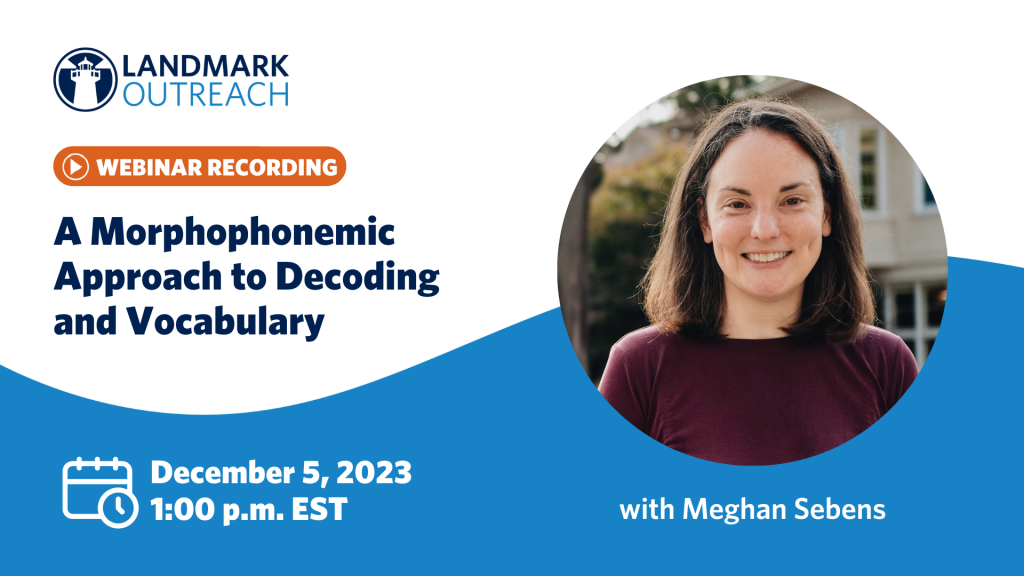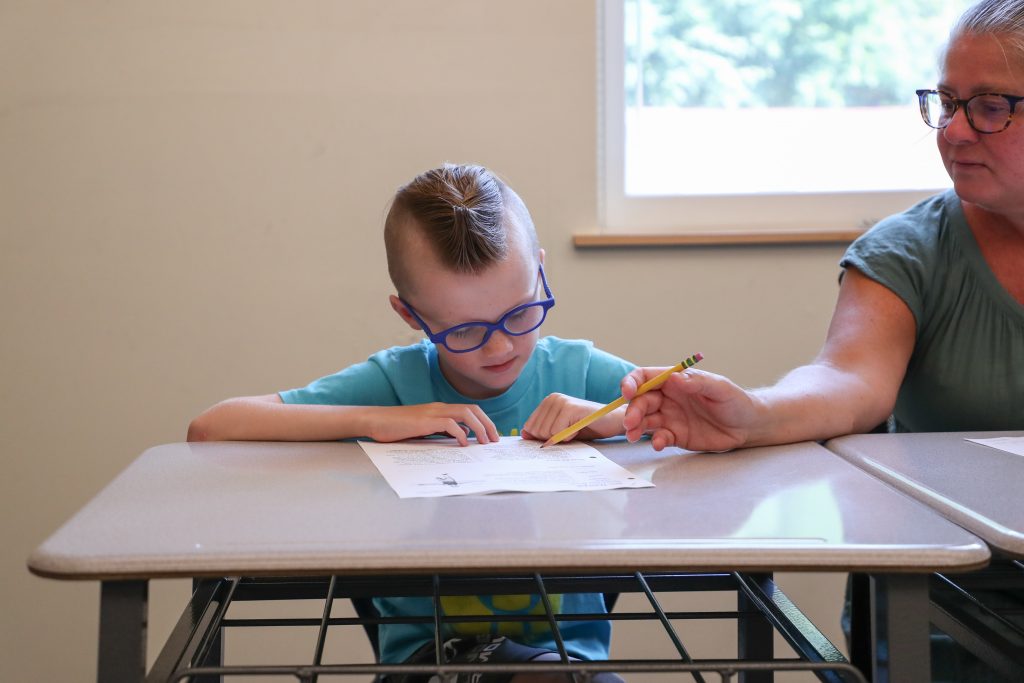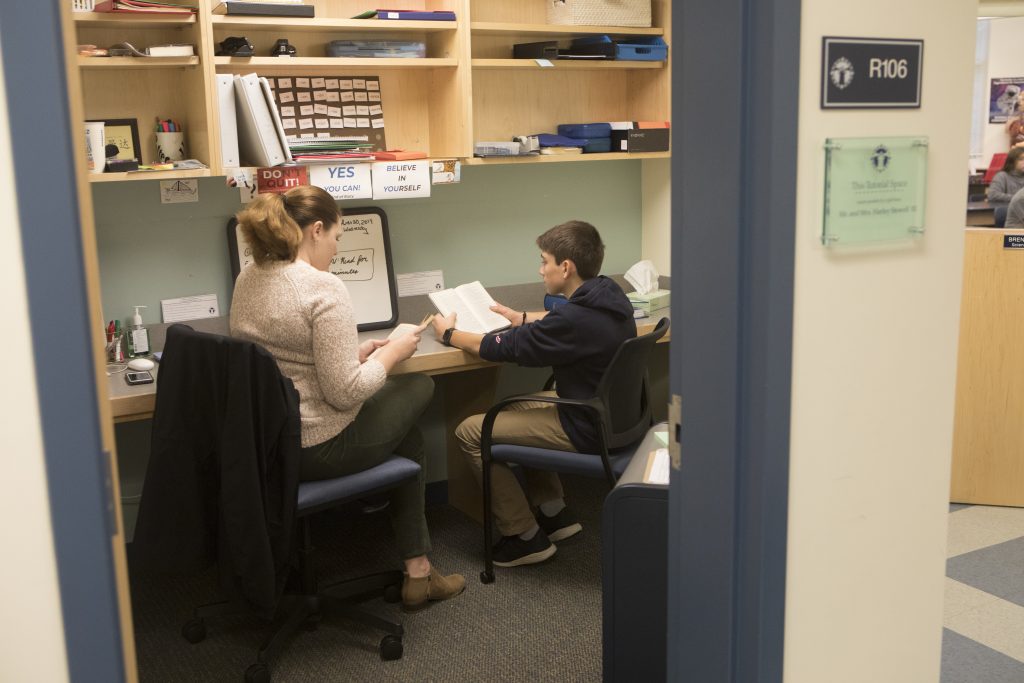What is Reading Fluency?
Reading fluency is the ability of readers to read words in text automatically and with a level of expression and phrasing that reflects the meaning of the text. Since the publication of the report of the National Reading Panel (2000), reading fluency has been recognized as a critical competency for success in reading. It is often viewed as a bridge between phonics or word decoding and comprehension. Research indicates that many children who struggle in reading have not adequately crossed that fluency bridge – and, as a result, comprehension and overall reading proficiency suffer (White, et al., 2021).
Key elements of fluency instruction include modeling fluent reading (read aloud to students), assisted reading (students read a text while simultaneously hearing the same text read to them by a partner, group, or recording), wide reading (students read a text one time and then move on to a new text), and deep or repeated reading (students read one text multiple times until they are able to read it with a degree of fluency). Research has shown that each of these instructional tools can promote fluency as well as improve overall reading proficiency. Typically, teachers focus on fluency by either focusing primarily on one or two of these instructional strategies, or, over the course of multiple days, tap into a different strategy each day.
Given that fluency is often neglected (often in lieu of additional phonics instruction) and because so many of our struggling readers exhibit significant difficulties in fluency, it may be helpful to think of fluency instruction synergistically. By synergistic fluency instruction I mean a regular instructional routine that contains all the elements of fluency instruction mentioned previously. In this way, the benefits from each of these instructional elements interact with one another to produce an effect together than they would if used individually – the whole being greater than the sum of the parts.
The Fluency Development Lesson (FDL) is one such synergistic approach to systematic, direct, and intensive fluency instruction. The FDL is a single lesson that employs short reading passages (poems, story segments, or other texts of between 50-200 words) that students read and reread over a short period of time. The goal of each Fluency Development Lesson is for students to achieve success in reading the text for that lesson. The general format for each 20-minute lesson follows:
In School
- Students read a familiar passage from the previous lesson to the teacher or a fellow student for accuracy and fluency.
- Model Fluent Reading. The teacher introduces a new short authentic text and reads it to the students two or three times while the students follow along. The text can be a poem, song, short story segment, etc.
- Model Fluent Reading. The teacher and students discuss the nature and content of the passage as well as how the teacher read the text. If the teacher reads the text to students multiple times, she may wish to make one or more of her readings less-than-fluent in order to invite comparisons with more fluent readings.
- Assisted Reading. The teacher and students read the passage chorally several times – whole group reading, antiphonal reading (breaking a poem into parts for different students or groups), and other variations of choral reading are used to create variety and maintain engagement.
- Repeated Reading. The teacher organizes groups of 2 or 3. Each student then practices the passage two to three times while the partner(s) listens, follows along, and provides support and encouragement.
- Repeated Reading. Individuals and groups of students perform their reading for the class or other audience. That audience may just be a parent or two sitting outside the classroom listening to each student and providing positive feedback.
- Word Study. The students and teacher choose 4 to 10 words of interest from the text to add to personal word banks and/or to the classroom word wall. The words are then read (and continue to be read regularly over the following few days).
- Word Study. Students engage in a brief period of word study activities with the words (e.g., word sorts, examination of and expansion of word families, flash card practice, word meanings, words, word games, etc.).
At Home
- Repeated Readings. Students take a copy of the passage home to practice with and perform for parents and other family members.
- Students return to school the following day and read the passage to the teacher or a partner who checks for fluency and accuracy.
- Repeat the lesson daily or as often as possible using different texts for each new lesson.
As you can see in the above overview, each lesson contains fluency (and other) instructional components. Done on a regular basis (3-5 times per week), the results of using the FDL can be significant and substantial. Indeed, the National Reading Panel (2000) identified the FDL as a promising approach for improving fluency in struggling readers. In one study of fourth-grade struggling readers provided the FDL over four months, these struggling readers made twice the gain in reading fluency (words read correct per minute) and nearly three times the gain in comprehension over what would be normally expected (Disalle & Rasinski, 2017). In our own university summer reading clinic for struggling elementary and middle grade students, we have found consistent gains, well above what would normally be expected, for word recognition, fluency, and comprehension (Zimmerman, et al., 2019). Indeed, a systematic review of fluency interventions such as the FDL used with learning-disabled students found that regular implementation of such interventions produced gains in both fluency and comprehension. Indeed, in a review of studies of fluency interventions on learning-disabled students, Stevens, Walker, and Vaughn (2017) found that multi-component interventions such as the FDL produce gains in fluency and comprehension for struggling readers.
The goal of any reading instruction routine or intervention is improvement in comprehension and overall reading proficiency. In as much as reading fluency is the bridge from word decoding to comprehension, and significant numbers of our struggling readers fail to cross that bridge, fluency interventions such as the FDL offer great promise for improving reading outcomes for the students we worry the most about.
References
- DiSalle, K., & Rasinski, T. (2017). Impact of short-term fluency instruction on students’ reading achievement: A classroom-based, teacher-initiated research study. Journal of Teacher Action Research, 3, 1-14.
- National Reading Panel. (2000). Report of the National Reading Panel: Teaching children to read. Report of the subgroups. Washington, DC: U.S. Department of Health and Human Services, National Institutes of Health.
- Rasinski, T. V. (2010). The Fluent Reader: Oral reading strategies for building word recognition, fluency, and comprehension (2nd edition). New York: Scholastic.
- Rasinski, T., & Cheesman Smith, M. (2018). The Megabook of Fluency. New York: Scholastic (Winner of the 2019 Teachers’ Choice Award for the classroom).
- Rasinski, T., & Young, C. (2023). Build Reading Fluency: Practice and Performance (2nd edition). Huntington Beach, CA: Shell Education.
- Stevens, E., Walker, M., & Vaughn, S. (2017). The effects of fluency interventions on the reading fluency and reading comprehension performance of elementary students with learning disabilities: A Synthesis of the research from 2001-2014. Journal of Learning Disabilities, 50, 576-590.
- White, S., Sabatini, J. Park, B., Chen, J., Bernstein, J., and Li, M. (2021). The 2018 NAEP Oral Fluency Study. Washington, DC: U.S. Department of Education.
- Zimmerman, B.S., Rasinski, T.V., Kruse, S.D., Was, C.A., Rawson, K.A., Dunlosky, J., & Nikbakht, E. (2019). Enhancing outcomes for struggling readers: Empirical analysis of the fluency development lesson, Reading Psychology, 40(1), 70-94.



